Vitamin K
What is Vitamin K?
A family of fat-soluble, structurally identical vitamins, known as vitamin K, is sold as dietary supplements and can be found in food.
The human body needs vitamin K to manage the binding of calcium in bones and other tissues, as well as to modify some proteins post-synthesis that are necessary for blood coagulation (K stands for “coagulation” in Danish).
The last modification of these so-called “Gla proteins” by the cofactor- enzyme gamma-glutamyl carboxylase, which requires vitamin K, is necessary for the entire production.
In the liver, vitamin K is reprocessed into vitamin K through a vitamin K oxide intermediate after being employed as the intermediate VKH2 to deprotonate a glutamate residue. Uncarboxylated proteins are a sign of vitamin K deficiency.
They cannot bind (chelate) calcium ions unless they undergo carboxylation. Without vitamin K, there is a significant reduction in blood coagulation and uncontrollable bleeding.
Studies indicate that a vitamin K deficit may also lead to calcification of arteries and other soft tissues, weakening bones and perhaps accelerating osteoporosis. Chemically speaking, the vitamin K family consists of derivatives of 2-methyl-1,4-naphthoquinone (3-).
Two naturally occurring vitamins are included in vitamin K: vitamin K1 (phylloquinone) and vitamin K2 (menaquinone). Conversely, vitamin K2 is composed of several similar chemical subtypes with varying carbon side chain lengths composed of isoprenoid atom groups.
Menaquinone-4 (MK-4) and menaquinone-7 (MK-7) are the two most researched. Because it is closely related to photosynthesis, vitamin K1 is produced by plants and is found in the highest concentrations in green leafy foods.
In animals, it serves as a vitamin and carries out the traditional roles of vitamin K, such as aiding in the synthesis of proteins that coagulate blood.
It can also be converted by animals to vitamin K2, specifically MK-4. K1 can also be changed into K2 by bacteria found in the gut flora.
Only bacteria are able to manufacture all forms of K2, with the exception of MK-4, and they do it through anaerobic respiration.
Menadione, or vitamin K3, is a synthetic version of vitamin K that was once used to treat vitamin K shortage. However, because it interferes with glutathione’s activity, it is no longer used in human nutrition for this purpose.
Definition
The term “vitamin K” describes fat-soluble, structurally comparable vitamins that are sold as dietary supplements and can be found in food. The term “vitamin K” refers to a group of substances.
These have a quinone ring in common, which makes them structurally similar, but they differ in the amount of repeating isoprene units in the side chain, as well as the length and saturation of the carbon tail (see figures in the Chemistry section).
Forms derived from plants are mostly made of vitamin K1. Foods derived from animals are mostly high in vitamin K2.
Vitamin K is a multifaceted nutrient that can be obtained from food, a synthetic product sold as a dietary supplement or as part of a multivitamin, and a prescription drug with specialized uses.
Dietary recommendations
The US National Academy of Medicine counts both K1 and K2 as vitamin K and does not make a distinction between the two.
Recommendations for most vitamins were based on estimated average requirements or suggested dietary allowances, but not on sufficient information when those terms were last updated in 1998.
The academy defines acceptable intakes (AIs) in situations like these as quantities that seem to be sufficient to maintain excellent health, with the idea that AIs will eventually be superseded by more precise information.
The current AIs for breastfeeding are 90 μg/day, pregnancy is 90 μg/day, and for adult women and men ages 19 and older, they are 90 and 120 μg/day, respectively.
The AI for newborns to 12 months old is 2.0–2.5 μg/day; The AI increases with age for children aged 1-18 years, going from 30 to 75 μg/day. In terms of safety, the academy establishes, when data is strong enough, acceptable upper intake levels (sometimes referred to as “upper limits”) for vitamins and minerals.
Since there is little human data about the negative effects of high doses of vitamin K, there is no upper limit. Adequate intake is defined in the US and the EU in the same manner.
The recommended daily dosage for males and women over the age of 18, as well as for pregnant and lactating mothers, is 70 μg. Adequate intake values for children aged 1-17 years grow from 12 to 65 μg/day as they get older.
Japan established appropriate daily intakes of 65 μg for adult women and 75 μg for adult men. After reviewing safety, the European Union, Japan, and the United States came to the same conclusion: there wasn’t enough data to establish an upper limit for vitamin K.
In the United States, the quantity in a serving is stated as a percentage of daily value for food and dietary supplement labeling.
In order to align with the maximum value for sufficient intake, 100% of the daily dose for vitamin K labeling was changed to 120 μg on May 27, 2016.
Firms with annual food sales of at least US$10 million were required to comply with the new labeling laws by January 1, 2020, and firms with lower volume food sales had to comply by January 1, 2021.
Reference Daily Intake provides a table with the current and old adult daily values.
Fortification
The Global Fortification Data Exchange states that no country mandates the fortification of food since vitamin K insufficiency is so uncommon. There are no guidelines for vitamin K fortification from the World Health Organization.
Sources
The main source of vitamin K1 is plant matter, particularly leafy green vegetables. Animal-based meals provide a little quantity.
The main sources of vitamin K2 are foods derived from animals, with eggs and chicken being far superior sources than beef, pork, or fish.
The latter is not always the case, as nattō—a dish prepared from fermented soybeans—is produced with microorganisms. The bacteria produce the vitamin K2 variation MK-7, which is abundant in this meal.
Vitamin K1
| Plant-sourced | Amount K1 (μg / measure) |
| Collard greens boiled, drained, 1⁄2 cup | 530 |
| Spinach boiled, drained | 445 |
| Turnip greens boiled, drained, 1⁄2 cup | 425 |
| Spinach raw, 1 cup | 145 |
| Brussels sprouts boiled, drained, 1⁄2 cup | 110 |
| Kale raw, 1 cup | 82 |
| Broccoli boiled, drained, 1⁄2 cup | 81 |
| Asparagus boiled, drained, 4 spears | 48 |
| Kiwifruit peeled, sliced, 1⁄2 cup | 36 |
| Chinese cabbage cooked, 1⁄2 cup | 29 |
| Blueberries frozen, 1⁄2 cup | 21 |
| Carrots raw, chopped, 1 cup | 17 |
| Plant-sourced | Amount K1 (μg / measure) |
| Hazelnuts chopped, 1 cup | 16 |
| Grapes, 1⁄2 cup | 11 |
| Tomato products, 1 cup | 9.2 |
| Olive oil, 1.0 tablespoon | 8.1 |
| Zucchini boiled, drained, 1.0 cup | 7.6 |
| Mango pieces, 1.0 cup | 6.9 |
| Pears, pieces, 1.0 cup | 6.2 |
| Potato baked, including skin, one | 6.0 |
| Sweet potato baked, one | 2.6 |
| Bread whole wheat, 1 slice | 2.5 |
| Bread white, 1 slice | 2.2 |
| Animal-sourced | Amount K1 (μg / measure) |
| Chicken, 4.0 oz | 2.7–3.3 |
| Mollusks, 4 oz | 2.2 |
| Cheese diced, 1⁄2 cup | 1.4–1.7 |
| Beef, 4 oz | 0.9 |
| Pork sausage, 4 oz | 0.9 |
| Yogurt whole milk, 1.0 cup | 0.4 |
| Milk whole or low fat, 1.0 cup | 0.2 |
| Fish, 4 oz | 0.1 |
| Eggs, one | 0.1 |
| Human milk, per liter | 0.85–9.2 (median 2.5) |
| Animal Source | Amount K2 MK-4 to MK-7 (μg / 100 g) |
| Goose | 31 |
| Chicken | 8.9 |
| Pork | 2.1 |
| Beef | 1.1 |
| Salmon | 0.5 |
| Egg yolk | 32 |
| Egg white | 0.9 |
| Animal Source | Amount K2 MK-4 to MK-7 (μg / 100 g) |
| Milk, whole | 0.9 |
| Milk, skim | 0.0 |
| Yogurt, whole milk | 0.9 |
| Butter | 15 |
| Cheese, hard | 8–10 |
| Cheese, soft | 3.6 |
| Fermented Source | Amount K2 MK-4 to MK-7 (μg / 100 g) |
| Natto | 1103 (90% MK-7) |
Vitamin K Deficiency
Vitamin K shortage can cause decreased blood clotting and, in extreme circumstances, increased bleeding, and increased prothrombin time, as it supports the mechanisms involved in blood clotting.
Normal diets typically do not contain insufficient amounts of vitamin K, meaning that deficiencies are rare in healthy adults and children.
A possible exclusion would be newborns who, due to inadequate vitamin transfer to the placenta and low levels of the vitamin in breast milk, are more susceptible to vitamin deficiencies throughout pregnancy and lactation, regardless of the mother’s vitamin status.
People with liver disease or damage, as well as those with malabsorption disorders like cystic fibrosis or chronic pancreatitis, can experience secondary deficiencies even if they ingest appropriate amounts of food.
Those who are on a vitamin K antagonist medication, such as warfarin, may also experience secondary vitamin K insufficiency.
Cefamandole is one medication that has been linked, albeit the exact mechanism is uncertain, to an increased risk of vitamin K insufficiency.
Medical Uses
Treating Vitamin Deficiency in Newborns
To stop bleeding from a vitamin K deficiency, babies receive an injection of vitamin K. Newborns’ blood clotting factors are between 30 and 60 percent of adult values; this seems to be related to insufficient fetal plasma vitamin K and inadequate vitamin transfer via the placenta.
Bleeding in the first week of life due to vitamin K deficiency is thought to occur in 0.25–1.7% of cases, or 2–10 instances for every 100,000 live births.
Human milk has a vitamin K1 content of 0.85–9.2 μg/L (median 2.5 μg/L), but infant The range of the formula is 24–175 μg/L. Exclusive breastfeeding may result in late-onset bleeding, which might appear two to twelve weeks after delivery, particularly if no prophylactic medication was received.
In newborns who had not received prophylaxis at or soon after delivery, the late onset prevalence was reported to be 35 instances per 100,000 live births.
Asians are more likely than Caucasians to experience bleeding due to a vitamin K deficiency. A severe vitamin K shortage can cause serious bleeding in newborns, which can result in hospitalization, brain damage, and even death.
When it comes to preventing vitamin K-deficient bleeding, intramuscular injection—which is usually administered soon after birth—is more successful than oral treatment, which requires weekly dosages for the first three months of life.
Managing Warfarin Therapy
One anticoagulant medication is warfarin. It works by preventing an enzyme from recycling vitamin K into a form that is useful.
Because of this, proteins—including those necessary for blood clotting—that ought to be altered by vitamin K aren’t, and as a result, they’re not functioning. The medication is intended to lower the chance of untimely blood clotting, which can have detrimental and even lethal effects.
The right dosage and consumption of vitamin K determine how well warfarin works as an anticoagulant.
Because the drug’s absorption varies and the amount of vitamin K in the diet varies, the dosage needs to be tracked and tailored to every patient.
Certain foods (such as collard greens, spinach, and turnip greens) have so much vitamin K1 in them that doctors advise against eating them at all.
For foods with moderately high vitamin content, the best course of action is to consume them as frequently as possible to ensure that the anti-clotting activity of the combination of vitamin intake and warfarin stays within the therapeutic range.
Vitamin K is used to treat bleeding incidents brought on by medication overdose. The vitamin can be injected subcutaneously, intravenously, or orally.
When there is no active bleeding but a person’s international normalized ratio is higher than 10, oral vitamin K is taken.
Vitamin K antagonists do not include the more recent anticoagulants rivaroxaban, dabigatran, and apixaban.
Treating Rodenticide Poisoning
In the pharmaceutical industry, coumarin serves as a precursor reagent for the manufacture of several synthetic anticoagulant medications. 4-hydroxycoumarins, one subclass, have antagonistic effects on vitamin K.
They prevent vitamin K from being recycled and regenerated. Certain compounds belonging to the 4-hydroxycoumarin anticoagulant class are specifically utilized as second-generation rodenticides, also known as “rat poison,” because of their great potency and extended bodily residence durations.
After a few days to two weeks, death happens, usually as a result of internal bleeding. For people, Treatment for animals that have eaten the rodenticide or rats that have been poisoned by it involves giving them substantial doses of vitamin K over an extended period of time.
In some circumstances, this dosage needs to be continued for up to nine months in order to treat “superwarfarin” rodenticide toxicity, such as brodifacoum.
Because oral vitamin K1 has fewer side effects than other vitamin K1 administration routes, it is preferable.
Methods of Assessment
Although prothrombin time, a coagulation assay, has been utilized to determine vitamin K levels, its sensitivity and specificity are insufficient for this purpose.
Vitamin K status is most typically measured by serum phylloquinone. Less than 0.15 µg/L is considered a deficit. The other vitamin K vitamins are excluded, and interference from recent food intake is a drawback.
The gamma-carboxylation of particular glutamic acid residues in the Gla domain of the 17 vitamin K-dependent proteins is dependent on vitamin K.
Therefore, an increase in these proteins’ uncarboxylated forms serves as an indirect, sensitive, and specific marker for vitamin K insufficiency.
When measuring uncarboxylated prothrombin, There is an increase in “Protein Induced by Vitamin K Absence/antagonism (PIVKA-II)” when there is a vitamin K deficit.
The test is performed to determine the newborn infant’s risk of bleeding from a vitamin K deficiency. The calcification of bone tissue is facilitated by osteocalcin. With a vitamin K deficit, the ratio of uncarboxylated to carboxylated osteocalcin rises.
There is evidence that vitamin K2 can reduce this ratio and increase the bone mineral density of the lumbar vertebrae.
The matrix Gla protein needs to be phosphorylated and carboxylated in response to vitamin K. A vitamin K deficit is indicated by an elevated plasma concentration of dephosphorylated, uncarboxylated MGP.
Side Effects
Since there is no known toxicity linked to large oral dosages of vitamin K1 or K2 forms of vitamin K, US, Japanese, and EU regulatory agencies agree that there is no need to establish an acceptable maximum intake threshold.
However, when administered intravenously, vitamin K1 has been linked to serious adverse responses such as bronchospasm and cardiac arrest.
The event, which occurs three times per 10,000 treatments, is classified as a nonimmune-mediated anaphylactoid reaction.
When polyoxyethylated castor oil was utilized as the solubilizing agent, the majority of reactions took place.
Non-Human Uses
In the pet food industry, menadione—a naturally occurring molecule commonly called vitamin K3 is utilized because, when ingested, it transforms into vitamin K2.
Because overdoses have been demonstrated to result in allergic reactions, hemolytic anemia, and cytotoxicity in liver cells, the US Food and Drug Administration has prohibited the sale of this form as a dietary supplement for humans.
4-amino-2-methyl-1-naphthol (“K5”) is not a “vitamin” because it is not a natural substance. According to research, “K5” may prevent fungus from growing in fruit juices.
Chemistry
The presence of a phytyl sidechain identifies the structure of vitamin K1, phylloquinone. The biological action of vitamin K1 is attributed to its (E) trans double bond and its two chiral centers on the phytyl sidechain.
Due to its absorption of violet light, vitamin K1 appears as a yellow viscous liquid at room temperature in the UV-visible spectra produced by UV-visible spectroscopy.
The polyisoprenyl side chain, which can have four to thirteen isoprenyl units, is what distinguishes the structures of menaquinones, or vitamin K2.
The most prevalent version is MK-4. Due to its huge size, vitamin K1 exhibits a wide range of peaks in mass spectroscopy, the majority of which are derivatives of the alkyl side chain and naphthoquinone ring base.
Conversion of Vitamin K1 to Vitamin K2
In the testes, pancreas, and artery walls of animals, vitamin K1 is converted to the MK-4 form of vitamin K2.
The molecular process for this transformation is still mostly unknown, however, it is known to occur in germ-free rats and in rats given K1 parenterally, demonstrating that the conversion is independent of gut microbes.
Evidence suggests that the conversion starts with the elimination of K1’s phytyl tail, which results in menadione, also known as vitamin K3, an intermediate that is subsequently prenylated to create MK-4.
Physiology
facilitated by vitamin K. The altered residues are frequently (but not always) located inside particular protein domains known as Gla domains.
Gla In animals, gamma-carboxyglutamate (Gla) residues are formed when certain glutamate residues in proteins are carboxylated. This process is residues are necessary for the biological action of all known Gla proteins and are typically involved in the binding of calcium.
There are 17 human proteins known to have Gla domains, and these proteins are essential for the control of three physiological processes:
- Blood coagulation: proteins C, S, and Z; prothrombin (factor II); factors VII, IX, and X
- Bone metabolism: gla-rich protein, periostin, matrix Gla protein (MGP), and osteocalcin . Matrix-based
- vascular biology Growth arrest-specific protein 6 (Gas6), also known as Gla protein Proline-rich γ-
carboxy glutamyl proteins 1 and 2, as well as transmembrane γ-carboxy glutamyl proteins 3 and 4, have unknown functions.
Absorption
The small intestine’s ileum and jejunum are where vitamin K is absorbed. Pancreatic and biliary juices are needed for the procedure.
When taken as a dietary supplement, the estimated absorption of vitamin K1 in its free form is 80%; however, this figure drops significantly when the vitamin is found in food.
For instance, whether cooked or raw, the absorption of vitamin K from foods with a high vitamin K content, such as spinach and kale, ranges from 4% to 17%.
Information regarding vitamin K2 absorption from diet is scarcer. The absorption of cholesterol is mediated by the intestinal membrane protein Niemann-Pick C1-like 1 (NPC1L1).
Studies on animals indicate that it influences the absorption of vitamins K1 and E as well. Potential interactions between SR-BI and CD36 proteins are also predicted by the same study.
The medication ezetimibe inhibits NPC1L1, which lowers the absorption of cholesterol in people and, in experiments on animals, also lowers the absorption of vitamin E and vitamin K1.
It is anticipated that giving ezetimibe, a vitamin K antagonist, to individuals taking warfarin will increase the effects of the medication. It has been verified in human beings.
Biochemistry
Function in Animals
Animals differ in how they distribute vitamin K according to the particular homolog. Whereas MK-4 is more abundant in the kidneys, brain, and pancreas, vitamin K1 is mostly found in the liver, heart, and pancreas.
Moreover, longer chain homologs MK-7 to MK-13 are present in the liver. In an animal cell, vitamin K2 serves the purpose of forming gamma-carboxyglutamate (Gla) residues by functionally attaching a carboxylic acid group to glutamate (Glu) amino acid residues in proteins.
This posttranslational alteration of the protein is rather unusual, and it is referred to as a “Gla protein”.
The ability of the gamma-carboxyglutamate residue to chelate calcium ions is owing to the presence of two −COOH (carboxylic acid) groups on the same carbon.
This type of binding of calcium ions frequently initiates the binding or action of Gla-protein enzymes, including the so-called vitamin K-dependent clotting factors that will be covered later. Vitamin K is involved in a cycle of events within the cell.
Under the assistance of the enzyme vitamin K epoxide reductase (VKOR), the vitamin undergoes electron reduction to a reduced form known as vitamin K hydroquinone (quinol).
Then, another enzyme known as gamma-glutamyl carboxylase or the vitamin K–-dependent carboxylase oxidizes vitamin K hydroquinone to permit carboxylation of Glu to Gla.
Only when the carboxylase enzyme is able to simultaneously oxidize vitamin K hydroquinone to vitamin K epoxide can the carboxylation reaction begin. It is said that the epoxidation and carboxylation processes are linked.
VKOR then converts vitamin K epoxide back into vitamin K. The term “vitamin K cycle” refers to the reduction, reoxidation, and carboxylation of vitamin K in conjunction with Glu.
Because vitamin K2 is partly constantly regenerated in cells, vitamin K deficiency is uncommon in humans.VKOR is inhibited by warfarin and other 4-hydroxycoumarins.
As a result, tissues have lower levels of vitamin K and vitamin K hydroquinone, which makes the glutamyl carboxylase-catalyzed carboxylation reaction less effective. As a result, clotting factors are produced with insufficient Gla.
These factors can no longer adhere steadily to the endothelium of blood vessels and are unable to initiate clotting to facilitate the development of a clot in the event of tissue damage due to the absence of Gla on their amino termini.
Due to the unpredictability of the optimal dose for clotting suppression, warfarin medication needs to be closely monitored to prevent under- or overdosing.
Gamma-Carboxyglutamate Proteins
Blood coagulation factors II (prothrombin), VII, IX, and X, anticoagulant proteins C and S, and factor X-targeting protein Z are among the human Gla-containing proteins (“Gla proteins”) that have been fully described.
The bone Gla protein osteocalcin, the matrix Gla protein (MGP) that inhibits calcification, the gene 6 protein that regulates cell development and growth arrest, and the four transmembrane Gla proteins, the purpose of which is now unknown.
The high-affinity binding of calcium ions (Ca2+) to Gla proteins, which is frequently required for their conformation and always required for their function, is attributed to the Gla domain.
Many different types of vertebrates, including fish, birds, reptiles, and mammals, have been found to contain GLA proteins.
Many Australian snakes’ venom works by triggering the body’s blood-clotting mechanism. Sometimes, procoagulant clotting factors are converted into activated ones, causing undesired and perhaps fatal clotting.
This is achieved by the action of snake Gla-containing enzymes, which attach to the endothelium of human blood vessels and facilitate the conversion. Conus geographus, a fish-hunting snail, synthesizes another intriguing class of invertebrate Gla-containing proteins.
These snails secrete a venom that is poisonous enough to kill an adult person, called conotoxins, which are hundreds of neuroactive peptides. There are two to five Gla residues in a number of the conotoxins.
Function in Plants And Cyanobacteria
In green plants, which include land plants and green algae, as well as in certain cyanobacteria species, vitamin K1 plays a crucial role in photosynthesis by acting as an electron acceptor and transferring one electron to photosystem I.
Because of this, vitamin K1 is present in much smaller amounts in other plant tissues but is abundant in the photosynthetic tissues of plants, which include green leaves and dark green leafy foods like spinach, kale, and romaine lettuce.
The discovery of VKORC1 homologs that are active on the K1-epoxide raises the possibility that K1 has a non-redox purpose in these organisms.
Plants lacking this gene exhibit growth restriction akin to mutants devoid of the capacity to generate K1, but not cyanobacteria.
Function in Other Bacteria
Many bacteria can produce vitamin K2 (MK-7 to MK-11), but not vitamin K1. One such bacteria is Escherichia coli, which is prevalent in the large intestine.
Menaquinone is an oxygen-independent metabolic energy producer that moves two electrons between two distinct tiny molecules in the vitamin K2 synthesizing bacteria (anaerobic respiration).
For instance, lactate, formate, or NADH are examples of tiny molecules containing a surplus of electrons (also known as electron donors) that, with the aid of an enzyme, transfer two electrons to menaquinone.
These two electrons are subsequently transferred by the menaquinone to an appropriate oxidant, such as fumarate or nitrate (also known as an electron acceptor), with the aid of another enzyme.
Fumarate is given two electrons, or The molecule is changed into succinate or nitrite plus water, respectively, by nitrate.
Similar to aerobic respiration in eukaryotic cells, some of these processes produce ATP, the cellular energy source, but the final electron acceptor is fumarate or nitrate rather than molecular oxygen.
Molecular oxygen, the last oxidant in aerobic respiration, takes four electrons from an electron source like NADH and transforms them into water.
As facultative anaerobes, Escherichia coli is capable of both anaerobic respiration mediated by menaquinone and aerobic respiration.
History
Henrik Dam, a Danish scientist, used a diet low in cholesterol to study the effects of cholesterol on hens in 1929. At first, he repeated studies that scientists at the Ontario Agricultural College had reported.
While working on the OAC chick feed program, McFarlane, Graham, and Richardson utilized chloroform to eliminate all fat from the chick chow.
It was observed that chicks fed exclusively on chow deprived of fat experienced hemorrhages and began to bleed from their tag sites. Dam discovered that dietary additions of pure cholesterol could not correct these abnormalities.
It seems that a second substance, known as the coagulation vitamin, had also been removed from the meal in addition to the cholesterol.
The novel vitamin was assigned the letter K as the earliest findings—which were referred to as Koagulationsvitamin—were published in a German publication.
A large portion of the study that resulted in the identification of the chemical makeup and structure of vitamin K was conducted by Edward Adelbert Doisy of Saint Louis University.
In recognition of their 1939 publication of research on vitamins K1 and K2, Dam and Doisy shared the 1943 Nobel Prize in medicine. The compound(s) was/were produced in multiple laboratories in 1939.
The vitamin K-deficient chick technique, which involves making the chicks vitamin K-deficient and then feeding them known quantities of food containing vitamin K, was the sole way to measure vitamin K in different diets for several decades.
The degree to which the meal improved blood coagulation was used as a proxy for vitamin K content.
This was separately discovered by three medical groups: Hugh Butt, Albert Snell, and Arnold Osterberg from the Mayo Clinic; Emory Warner, Kenneth Brinkhous, and Harry Pratt Smith from the University of Iowa Department of Pathology; and Dam and Johannes Glavind from the Biochemical Institute.
In 1938, Smith, Warner, and Brinkhous published the first published account of successfully treating a life-threatening hemorrhage in a jaundiced patient with prothrombin insufficiency using vitamin K.
It wasn’t until 1974 that the specific role of vitamin K was identified, when prothrombin, a blood coagulation protein, was found to be dependent on vitamin K.
Prothrombin, which is involved in the clotting process, can bind calcium when the vitamin is present because it contains amino acids near the protein’s amino terminus that are classified as γ-carboxyglutamate rather than glutamate.
Research
The gamma-carboxylation of osteocalcin in bone is dependent on vitamin K. The risk of osteoporosis, measured by fractures and bone mineral density, was unaffected by warfarin therapy—a vitamin K antagonist.
Increased vitamin K1 consumption in the diet may slightly lower the incidence of fractures. However, the idea that taking a vitamin K supplement lowers the incidence of bone fractures is not well-supported by the available data.
Supplementation trials revealed increases in bone mineral density for postmenopausal women and for all individuals diagnosed with osteoporosis.
Additionally, a reduction in the likelihood of any clinical fractures, with no discernible variation in the case of vertebral fractures. A subgroup of research has been done on vitamin K2 MK-4 supplementation and bone health.
A meta-analysis found no statistically significant differences for vertebral fractures, but an increase in lumbar spine bone mineral density and a decrease in the ratio of uncarboxylated to carboxylated osteocalcin.
Cardiovascular Health
Matrix Gla protein is a calcium-dependent protein that is present in soft tissues like arteries and is thought to have anti-calcification properties.
Studies on animals have shown that arteries and other soft tissues get calcified in those lacking the MGP gene.
Keutel syndrome is a rare recessive genetic condition in humans that is characterized by aberrant widespread cartilage calcification and anomalies in the gene coding for MGP.
Based on these data, a theory was developed suggesting that persons with poor dietary intake of the vitamin may have inadequately carboxylated MGP, which could lead to an increased risk of coronary heart disease and arterial calcification.
Low vitamin K intake was linked to inactive MGP, arterial calcification, and arterial stiffness in meta-analyses of population studies. Higher rates of coronary heart disease were also linked to lower dietary intakes of vitamins K1 and K2.
Low levels of circulating vitamin K1 were associated with an increased risk of all-cause mortality when measured in the blood.
A review of randomized trials utilizing vitamin K1 or K2 supplementation revealed no role in lowering arterial stiffness or mitigating vascular calcification, in contrast to these population studies. The trials were too brief to evaluate any effect on mortality or coronary heart disease.
Other
According to population research, vitamin K level may influence neuronal, endocrine, and inflammatory processes as well as have an anti-cancer effect.
There isn’t enough data from intervention trials for any of these to make any judgments. Long-term use of vitamin K antagonists as anticoagulant medication is linked to a decreased risk of cancer overall, according to a study of observational trials.
Reviews on the subject of whether agonists lower the risk of prostate cancer are inconclusive.
FAQ
What vitamin K means?
Vitamin K is known as the clotting vitamin. The body needs vitamin K to make certain proteins in the liver that cause blood to clot. These proteins are called clotting factors. Without vitamin K, the liver could not produce clotting factors II, VII, IX, and X, and blood would not clot.
What is vitamin K good for?
Vitamin K is a group of vitamins that the body needs for blood clotting, helping wounds to heal. There’s also some evidence vitamin K may help keep bones healthy.
Which foods contain vitamin K?
The most common foods with high vitamin K are green leafy vegetables such as kale, collard greens, broccoli, spinach, cabbage, and lettuce. Foods with vitamin K that could affect warfarin are listed on the next 2 pages. Other foods that could affect warfarin are beef liver or other animal liver products.
Who needs vitamin K?
Vitamin K is a nutrient that the body needs to stay healthy. It’s important for blood clotting and healthy bones and also has other functions in the body. If you are taking a blood thinner such as warfarin (Coumadin), it’s very important to get about the same amount of vitamin K each day.
Are carrots high in vitamin K?
Carrots are a great source of important vitamins and minerals. A half-cup can give you up to: 73% of your daily requirement of vitamin A. 9% of your daily vitamin K.
Is curd rich in vitamin K?
All full-fat dairy products contained appreciable amounts of MK, primarily in the forms of MK9, MK10 and MK11.

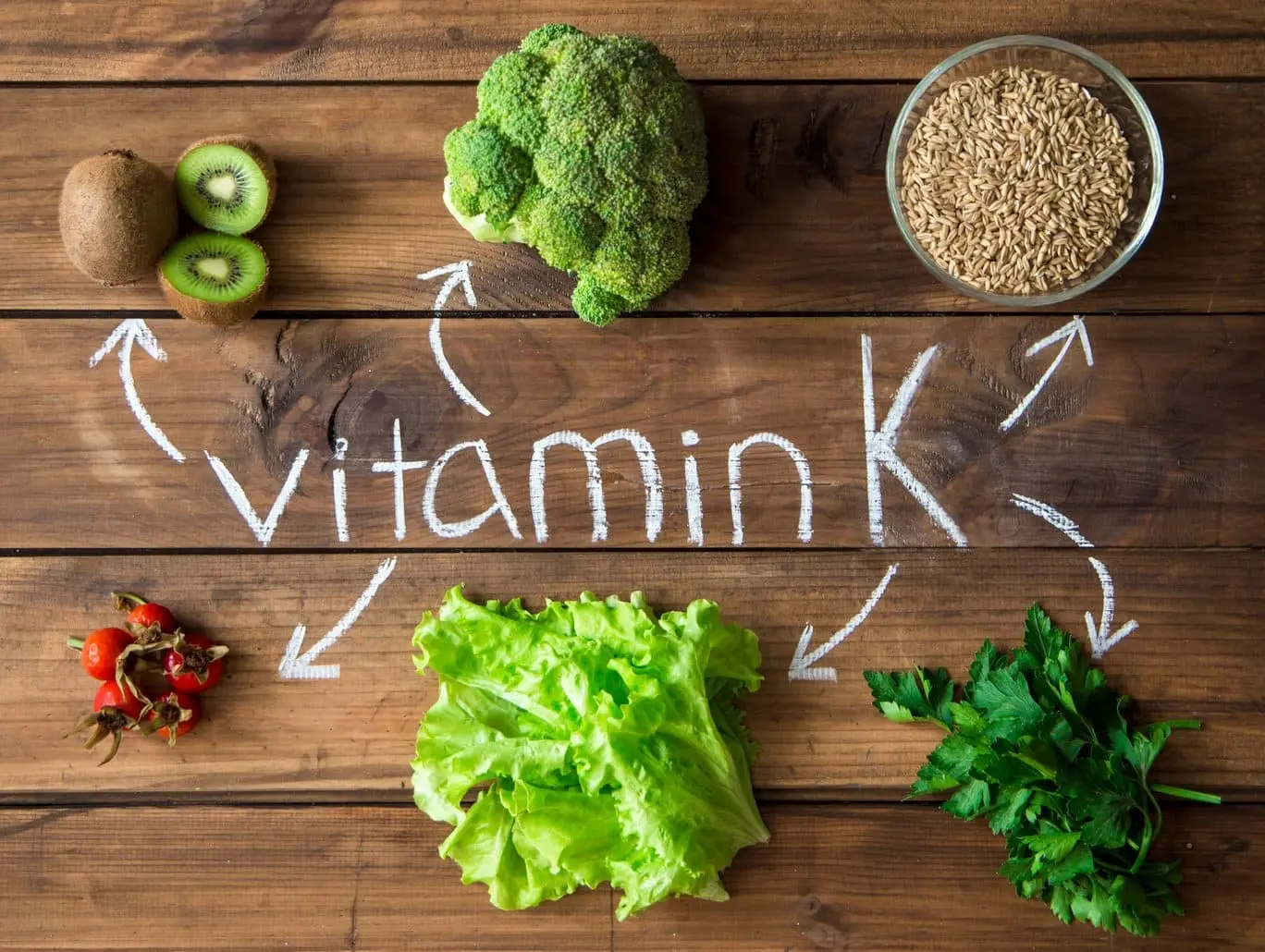
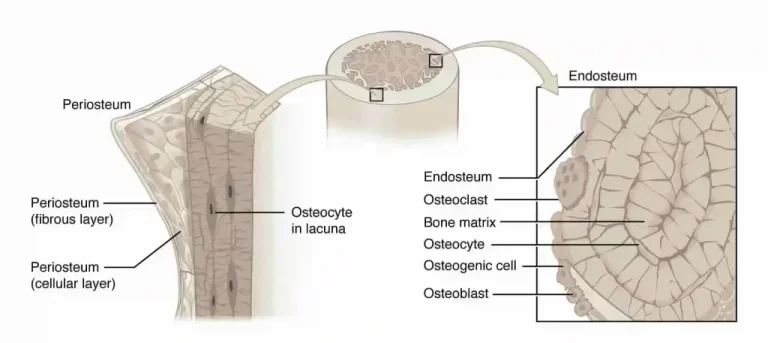
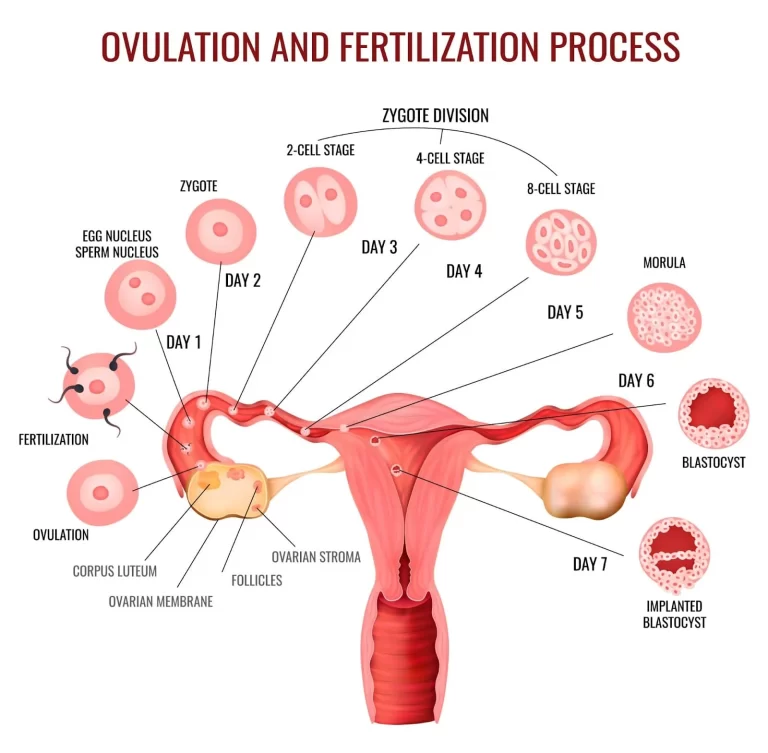

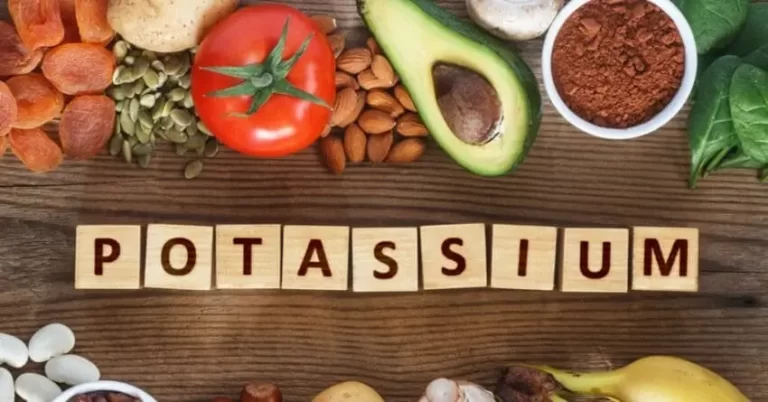
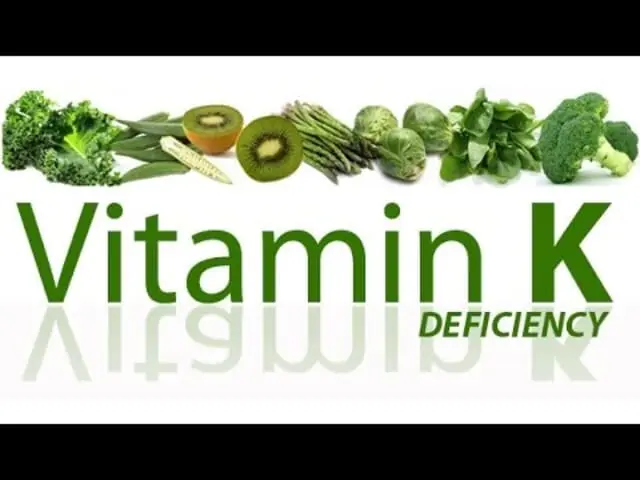
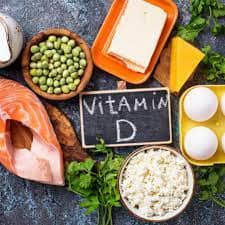
4 Comments